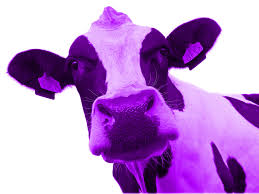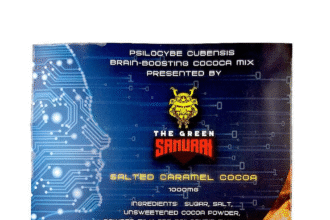The concept of “Purple Cow” originates from marketing expert Seth Godin, who used the term to describe products or services that grab attention immediately. The Purple Cow meaning emphasizes being remarkable in a world filled with repetitive and unnoticed choices. But beneath this concept lies several psychology principles that explain why people are drawn to something different and why they act on it.
Let us look into the psychological reasons that make the Purple Cow strategy effective.
Purple Cow Meaning in Simple Terms
Before going deeper, let us understand the basic meaning. The phrase “Purple Cow” represents something that is so different from the ordinary that it stands out. Just like how spotting a purple-colored cow among regular ones would catch anyone’s eye, a product or idea that breaks expectations will stand out in any setting.
Marketers use this concept to shift attention to something that is immediately visible, sticks in the mind, and compels a person to take action.
Principle of Attention
The first psychological principle that supports the Purple Cow meaning is attention. Human attention works based on contrast. The brain filters out familiar information and highlights anything that looks unfamiliar or surprising. This behavior comes from evolution, where survival depended on spotting anything out of place in an environment.
In marketing or content creation, introducing an element that visually or conceptually breaks the pattern can help capture this attention. The Purple Cow method uses this behavior to its advantage.
Pattern Interrupt Theory
Pattern interrupt is a technique in psychology used to change thought patterns. When people see or hear something unusual, their brain pauses. This moment of interruption creates a short space for curiosity to grow.
This technique is often used in advertising where a surprising image, color, or phrase catches people off guard. The Purple Cow principle operates the same way. It breaks the mental pattern of how things should look or behave, which causes people to notice.
Curiosity and Cognitive Dissonance
Once attention is gained, the next step is keeping it. This is where curiosity comes in. If something goes against expectation, the brain wants to resolve the confusion. This urge to know more is tied to cognitive dissonance, a psychological discomfort people feel when faced with conflicting thoughts or information.
When a person sees a product that does not match their mental model, like a purple cow, it creates a gap in understanding. The natural human response is to find out more until the gap is closed. This drives engagement and interest.
Emotional Triggers
Emotions play a big role in decision-making. When something is different, it often triggers emotions like surprise, joy, or even disbelief. These emotions make people remember the product or message.
The Purple Cow method uses these emotional reactions to leave a lasting mark. People may talk about what surprised them. This leads to word-of-mouth marketing, which is more powerful than traditional advertising.
Social Proof and Belonging
When something stands out, people may hesitate to accept it right away. But once a few others show interest, the idea spreads quickly. This is due to the psychological principle of social proof.
Humans naturally look to others for cues on how to behave. If someone sees others reacting to a new product or idea positively, they are more likely to follow. The Purple Cow concept relies on this ripple effect. Once the initial group reacts, others begin to notice and participate.
Scarcity and Novelty Effect
When something is rare or new, people give it more attention. The scarcity effect explains how value increases when availability decreases. If a product appears to be one of a kind, people want it more.
Similarly, the novelty effect explains how people are drawn to new experiences or information. A Purple Cow strategy introduces something that feels new, even if it is not new in reality. The way it is presented creates this sense of freshness, which draws people in.
Memory Retention and Recall
Things that are different are easier to remember. Memory studies show that distinctiveness helps with recall. If a message or product shares similar features with many others, it is easy to forget. But if it breaks that similarity, the brain files it differently.
This is why the Purple Cow meaning is used as a branding method. It helps build long-term memory with the audience. They are more likely to remember and recall a product that stands out in their mind.
Relevance Over Time
While standing out is important, relevance is equally necessary. A product that is different but does not meet any need will be ignored. The psychological pull happens when difference is tied with purpose.
This is why many successful marketing campaigns focus not just on making something look different, but also making sure it fits into what people already value or want.
Final Thoughts
The Purple Cow meaning is more than a marketing phrase. It is a combination of psychological effects that, when applied together, create strong reactions from people. It works on the principles of attention, emotion, memory, curiosity, and social behavior.
When applied thoughtfully, these principles can help ideas gain visibility and influence. But they need to be used with care. Standing out without meaning can confuse. But when the difference aligns with purpose, it creates real impact.

















